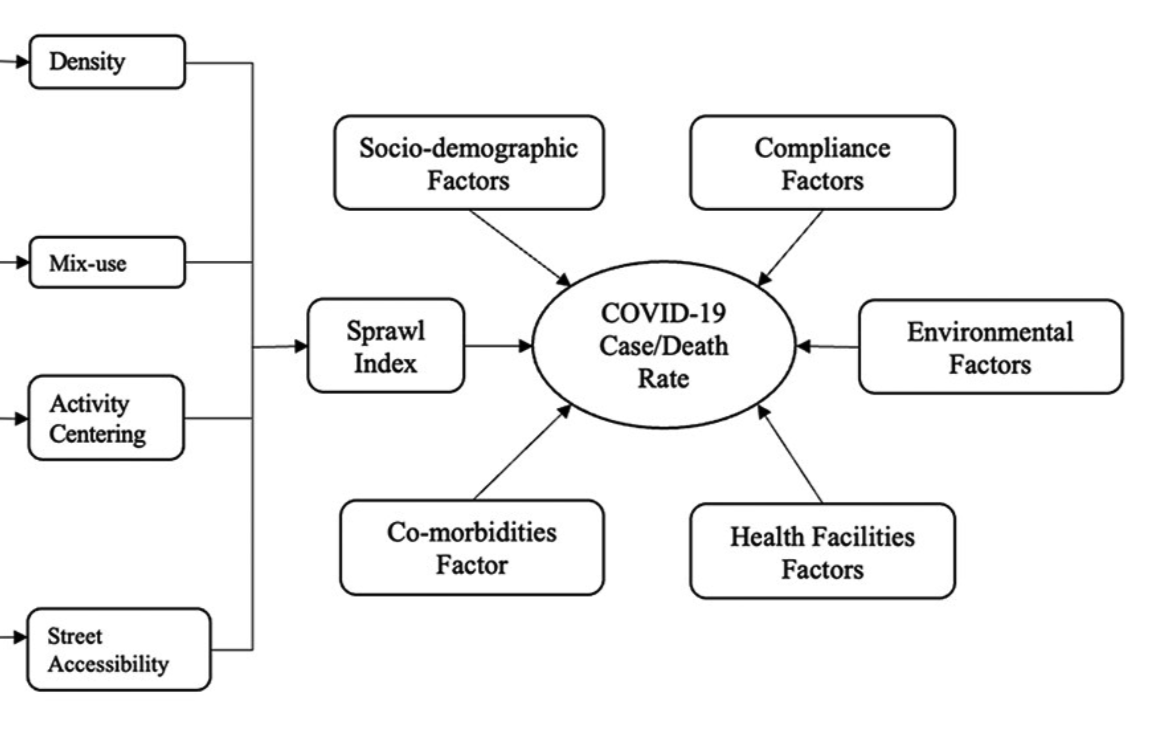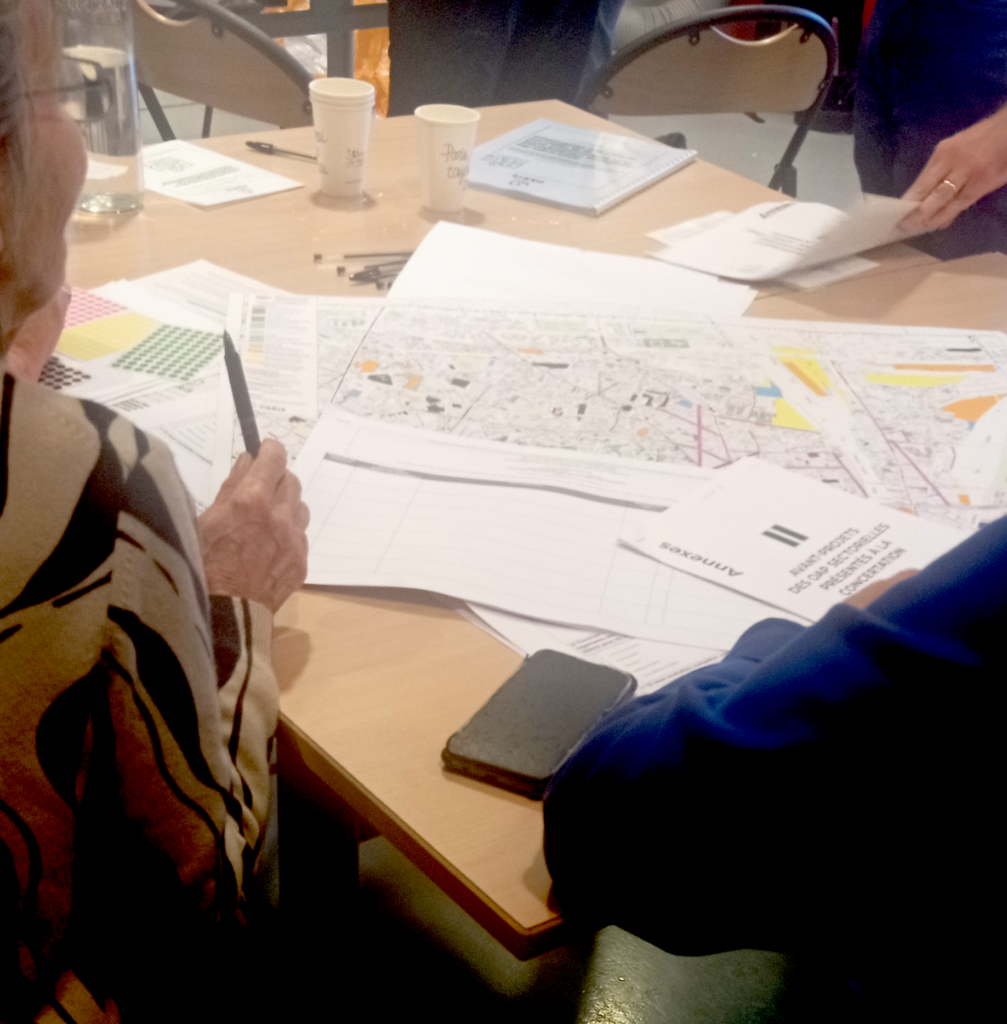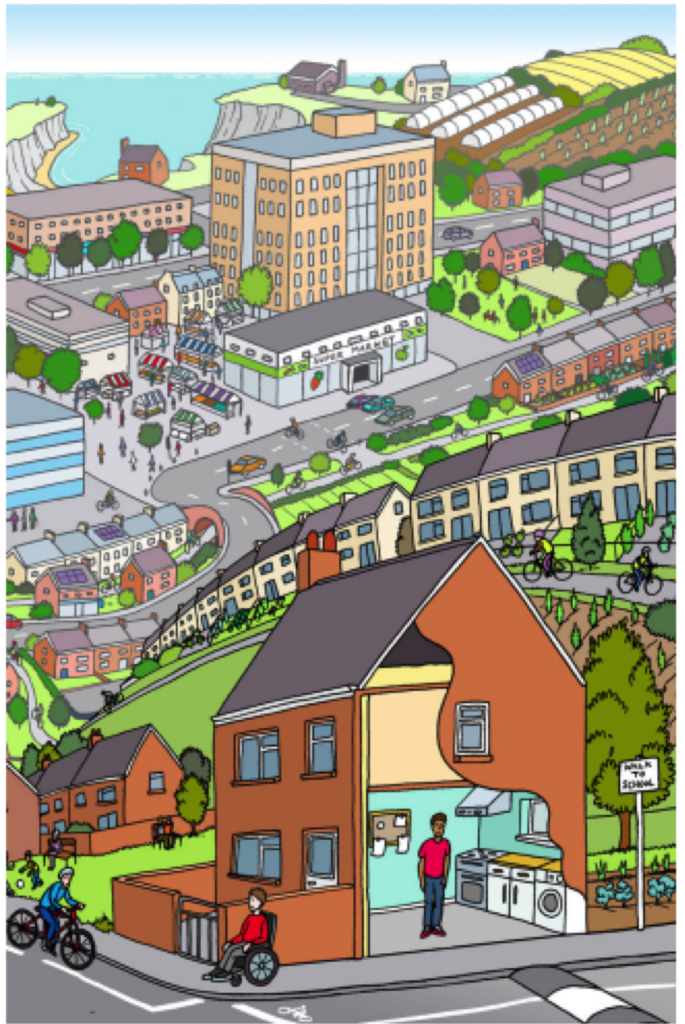City Know-hows

Target audience
Urban planners, city and regional planning organizations, urban policy makers
The problem
The physical structure and layout of urban environments can have a significant impact on COVID-19 spread. There is little research being conducted on how such development condition may have different outcome during different phases of COVID-19.
What we did and why
We conducted a research study that employed multivariate regression analysis to investigate the impact of demographic characteristics, social distancing measures, healthcare capacity, and urban form indicators on COVID-19 infection and death rates. The purpose of the study was to explore the associations between these variables and COVID-19 rates to gain insights into the role of urban form in the pandemic’s outcomes.
Our study’s contribution
Our result reveal significant associations between several variables and COVID-19 rates. Notably, the compactness index, used as a measure of urban sprawl, showed mixed results, with a positive relationship observed during the lockdown phase and a negative relationship during the post-lockdown period. Additionally, a higher percentage of the black population, older age, and lower educational attainment were found to be positively correlated with case and death rates.
Impacts for city policy and practice
The research highlights the importance of considering both demographic and urban form factors when analysing the impact of COVID-19 on urban areas. City authorities and policymakers can use this information to make informed decisions about strategies for urban growth, housing policies, social distancing measures, and healthcare capacity planning.
Further information
Full research article:
Relationship between urban form and COVID-19 severity: impact of compactness during the lockdown and post-lockdown periods by Md Hamidur Rahman & Angela Antipova.
Related posts

This study introduces a place-based model of urban environmental health drawn from residents’ perspectives.
• Highlights eight interconnected local parameters of environmental health.
• Demonstrates that residents link environmental health to everyday nuisances like noise, air pollution, and lack of safety.
• Shows that viable and livable environments depend on inclusive governance and infrastructure decisions.
• Offers a replicable approach for other cities to assess urban health from the ground up.

Our systematic review of the impacts of neighbourhood design on well-being found strong evidence linking design principles such as walkability and access to green space with health and well-being.

A study of apartment residents identified an association between construction defects and mental health. For every additional problem, wellbeing decreased and psychological distress increased.